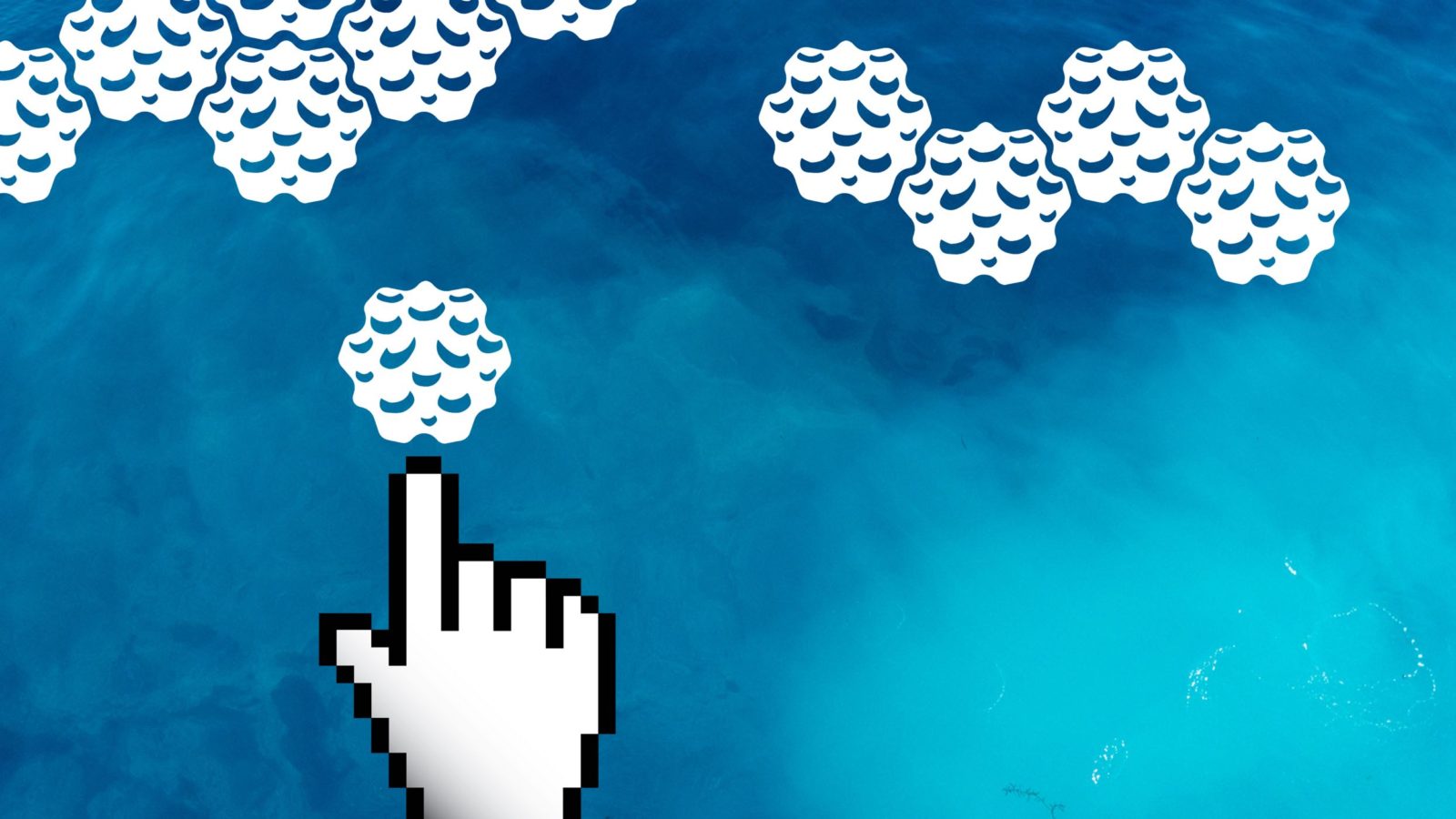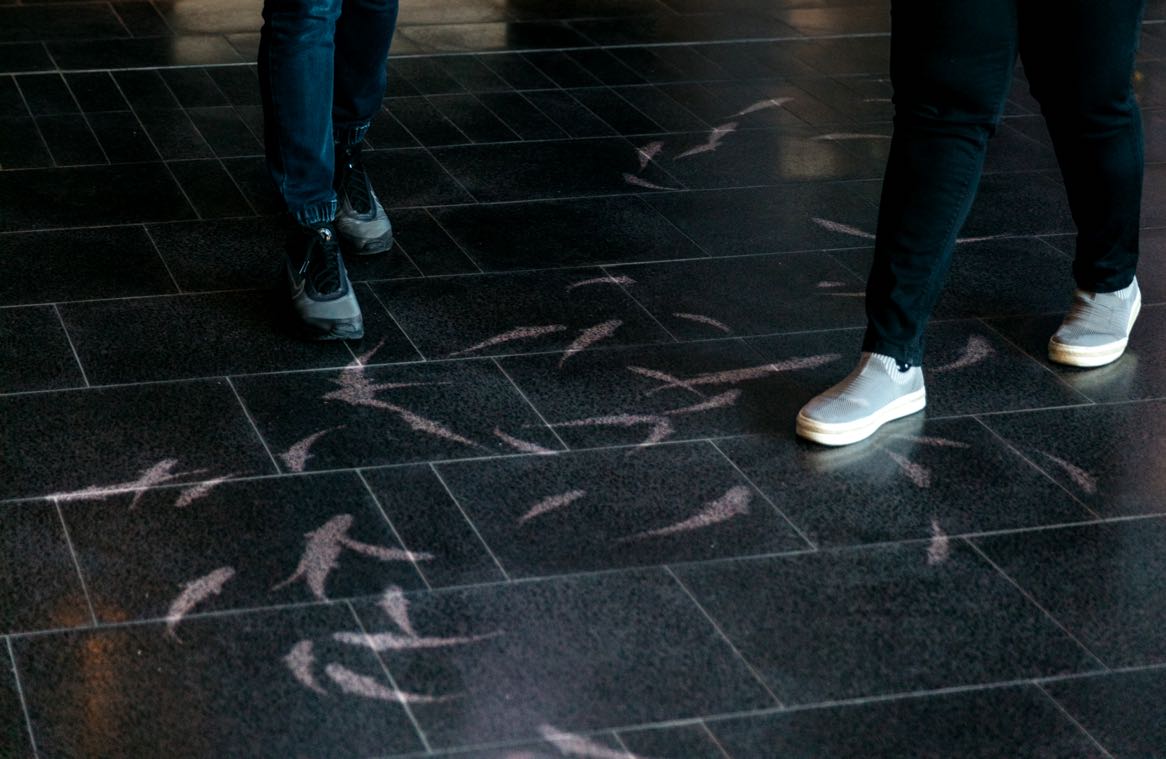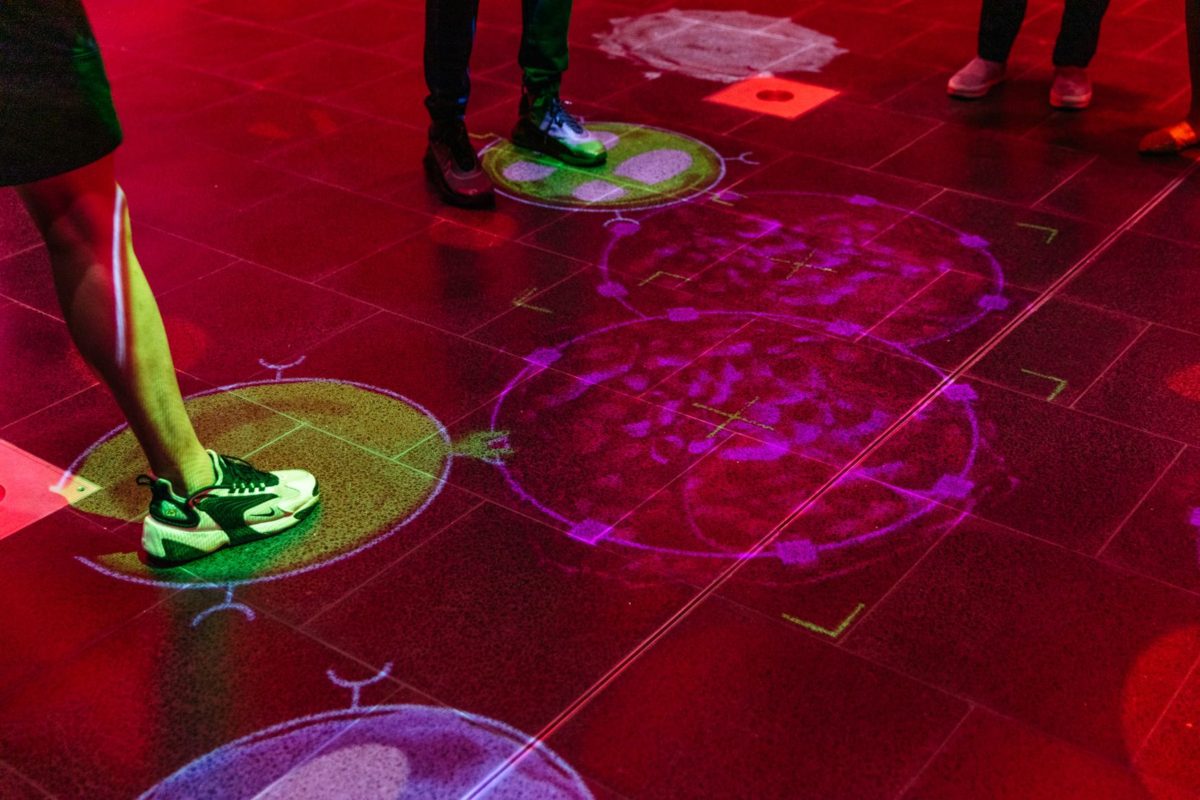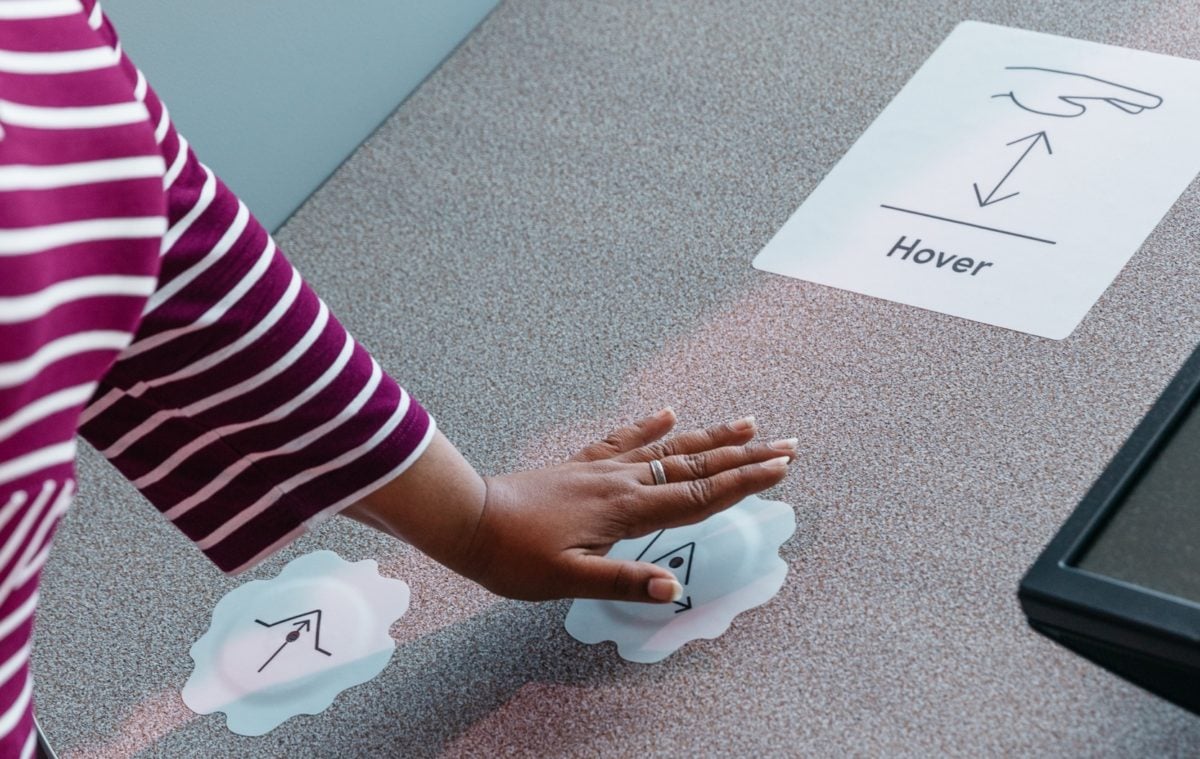Posted 19 Jul

Interactive exhibits get a bit tricky during a pandemic. One of our design principles here at MOD. is to be participatory, that is, creating spaces for doing, not just seeing. But if you can’t touch something, how can you interact with it? Here are a few good ways we found while developing It’s Complicated.
As you enter our Lecture gallery, you might notice a school of fish swimming idly on the floor. And if you approach, you may be surprised when they scatter to avoid you, as they would a hungry shark.

Feeding Frenzy is a collaborative interactive with Monkeystack. The exhibit illustrates the collective animal behaviour called flocking, where individuals follow basic rules to organise themselves. Very simply, each fish moves closely in the same direction as its mates without crashing into them.
That is until a predator arrives on the scene. When that happens, fish will avoid the intruder while maintaining their rules, if possible. In our Lecture gallery, the intruder is you. Your location and movement is tracked by a depth sensing ZED camera, a passive stereo camera that reproduces the way human vision works. The ZED creates a three-dimensional map of the scene by comparing the displacement of pixels between the left and right images. When a critical mass of pixels (i.e., you) is detected, the algorithm is triggered and the behaviour of the fish animation changes.

Another use of depth-sensing technology is in our Cell Invaders interactive floor game. We worked with Arterial Design to gamify cancer therapy by utilising visitor movement, an Intel RealSense depth camera, and projections of animated cell biology.

You begin the game as an ordinary T-cell (one of the immune system’s white blood cells) but you are none-the-wiser to the cancer wreaking havoc in your bloodstream. However, you do have a secret weapon – a genetic modification that allows you to seek and destroy cancer cells. As an empowered Car-T cell, your new receptors can attach to a cancerous cell, inducing apoptosis (aka cell death).
Other attempts to minimise touch in the exhibition led us to work with Sandpit on trialling a method for determining distances from an object called lidar (light detection and ranging). Lidar works by targeting an object with a laser and measuring the time for the reflected light to return to the receiver. In an exhibit about designing underwater habitats for sea critters, visitors could change the topography of a virtual seawall tile by hovering their hand at different heights from the sensor. Varied topographies translate into niche habitats for a range of sea creatures looking for place to hangout on all-too-often flat concrete harbour walls.

Lidar is obviously an excellent technology with many terrestrial, airborne and mobile applications. Autonomous cars and high-resolution land surveying are popular examples of this. While we have successfully used lidar in a previous exhibit, this time there were challenges around calibration. Also, we observed that our visitors are so accustomed to touching interactives that the concept of hovering was not as intuitive as our floor-based games, and occasional touching led to ongoing damage of the fragile sensors.
If you haven’t visited It’s Complicated yet, come in and discover Cell Invaders, Feeding Frenzy and the rest of the exhibition (and if you have been in already, why not visit us again?). Otherwise, keep an eye out for what we come up with next.